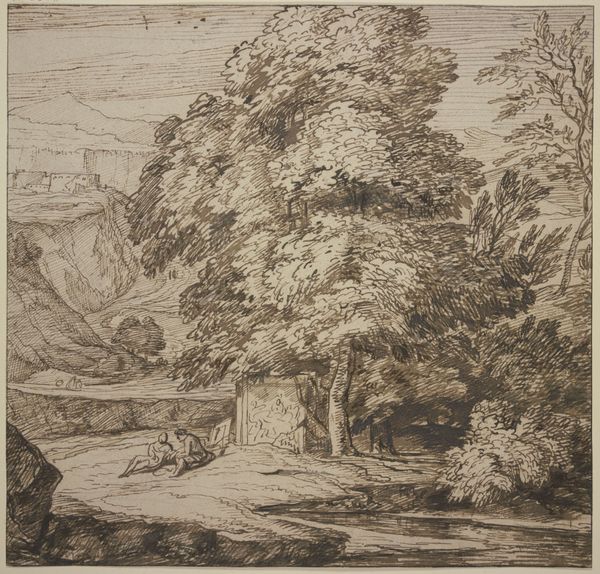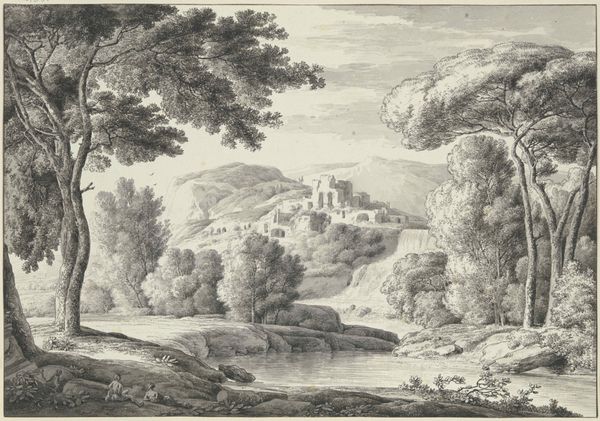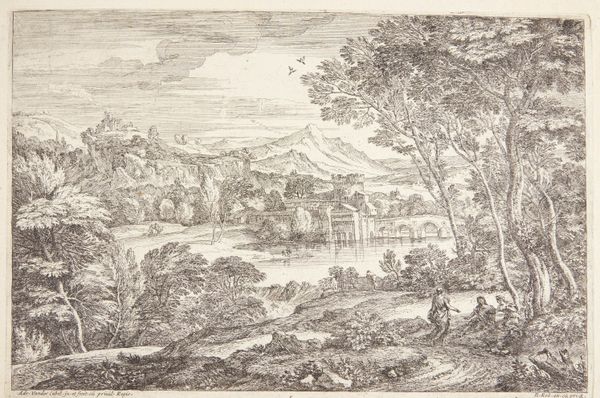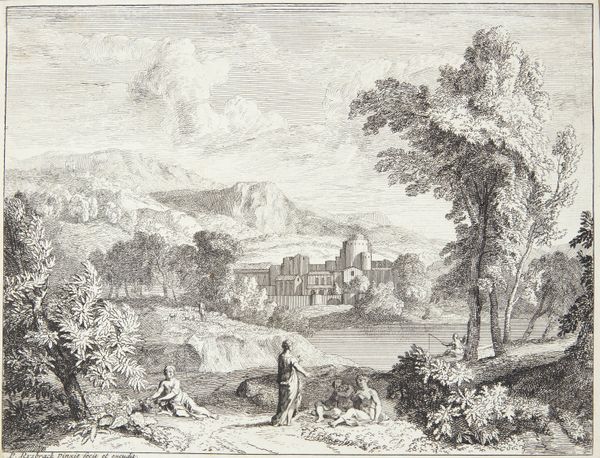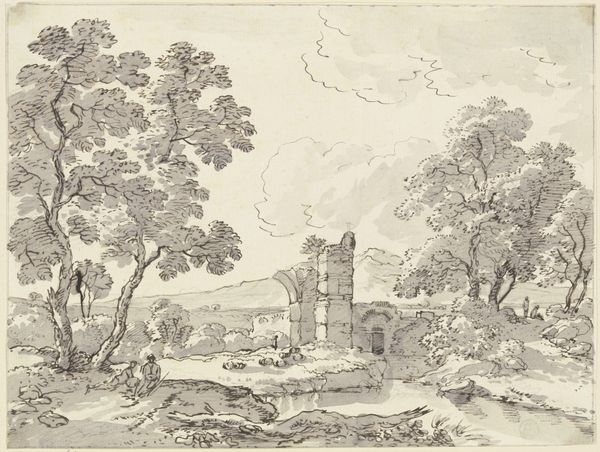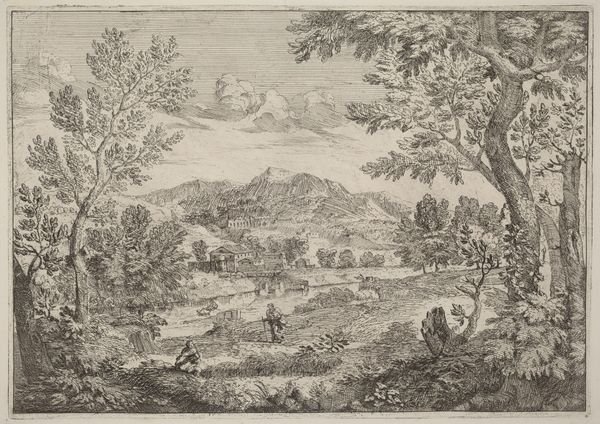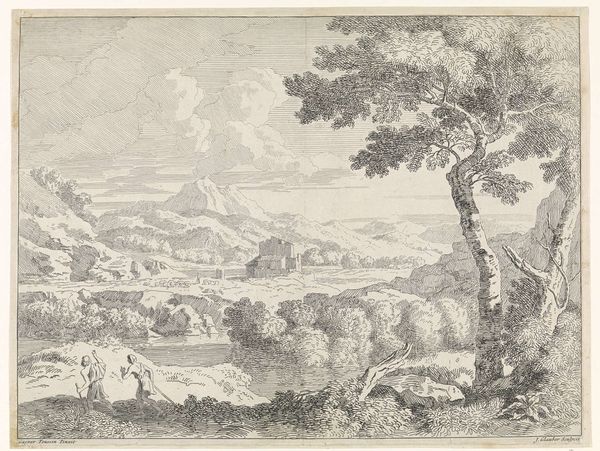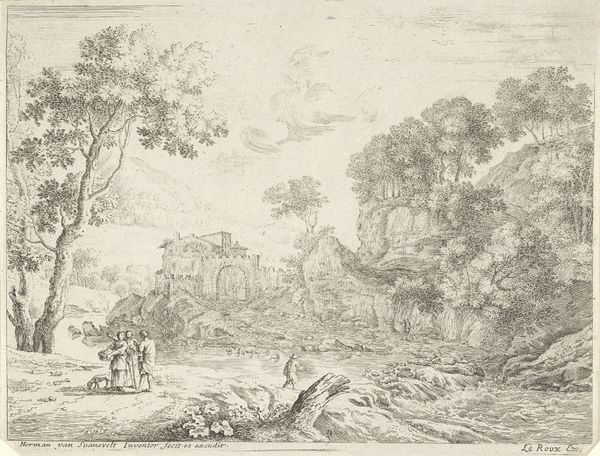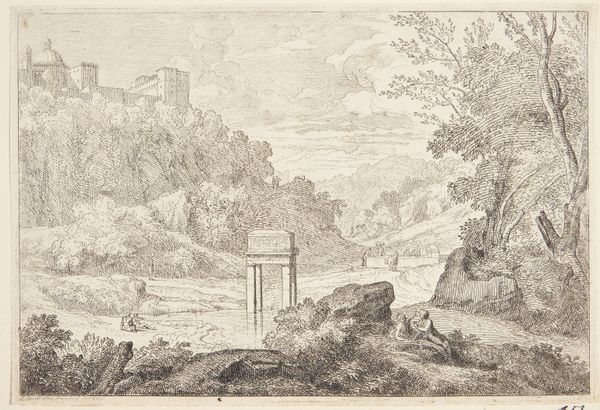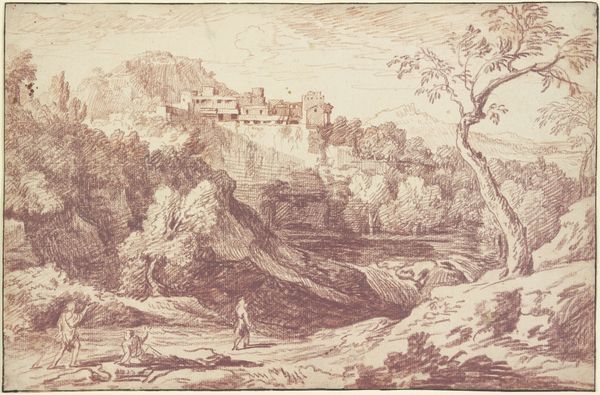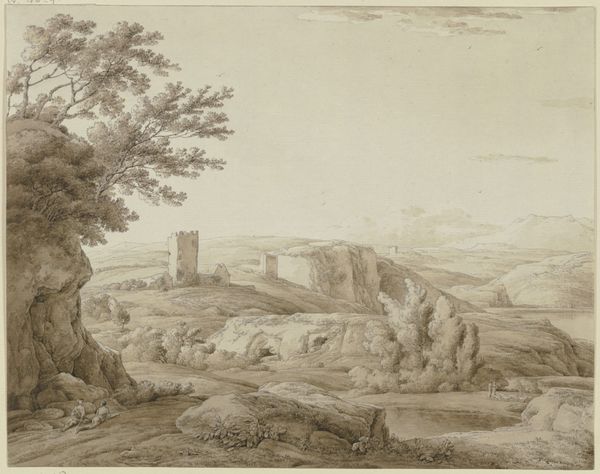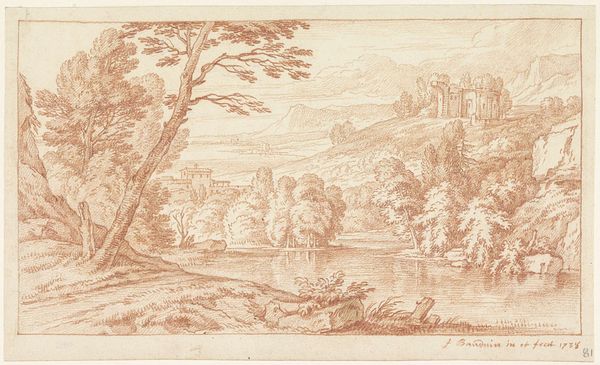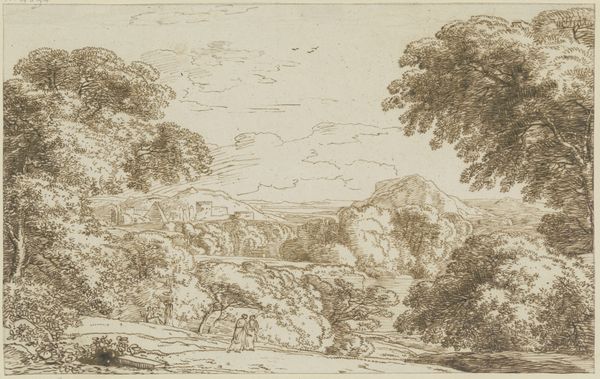
Italienische Landschaft mit Gebäude, auf dem Weg ein Hirte mit Schafen, links drei Figuren
0:00
0:00
drawing, etching, ink, charcoal
#
drawing
#
baroque
#
etching
#
landscape
#
etching
#
charcoal drawing
#
ink
#
14_17th-century
#
charcoal
Copyright: Public Domain
Curator: I’m struck by the delicacy of the lines in this work. The artist, Johannes Glauber, uses etching and ink to create an "Italian Landscape with Buildings, a Shepherd with Sheep on the Path, and Three Figures on the Left." Editor: The landscape is wonderfully serene; there is a very tangible contrast with the crumbling architecture in the background, it imbues this scenery with the ephemeral mood of remembrance. Curator: Absolutely. Glauber’s process allows him to achieve this fine detail. The etching technique itself involves coating a metal plate, drawing into it, and then using acid to bite away at the exposed lines. The varying widths of the lines suggest that the artist paid great attention to the duration and strength of acid used. Editor: Indeed. One is reminded of idealized Arcadian landscapes—those ever-present themes of shepherds, classical ruins. Even the choice of including a serene body of water as a reflecting element carries specific symbolic weight across various cultures, representing subconscious, memory and reflection. Curator: These prints were likely produced in multiples and made widely available through trade. In the 17th century, landscape prints offered a visual connection to idealized scenes of prosperity for trade, not necessarily places someone might ever travel, which provided the material benefit of connecting the buyer to the market. Editor: It does also reflect, more broadly, a cultural fascination with the idyllic past and the glory of classical civilization, tinged by a romantic sensibility about time's passage and inevitable decay. The ruined building itself seems like a melancholic monument, almost a character. Curator: I think the scale contributes to the emotional impact, and it makes you feel small within the vastness and potential for social progress that landscape etchings afforded people to project onto it. Editor: It’s fascinating how he used relatively simple materials—ink and a metal plate—to evoke such a rich landscape. It speaks volumes about how much meaning even basic techniques can bear. Curator: Ultimately, thinking about how the image was produced gives me an understanding of its impact at the time, versus how we interpret the work today. It all comes back to the human investment into the materials. Editor: Yes. Looking at how images can carry this symbolic weight is still very important to our experience in viewing it now, offering a window into human yearning and how we remember the world around us through these reproduced materials.
Comments
No comments
Be the first to comment and join the conversation on the ultimate creative platform.
